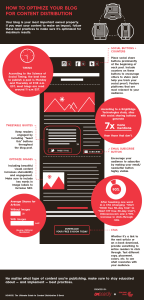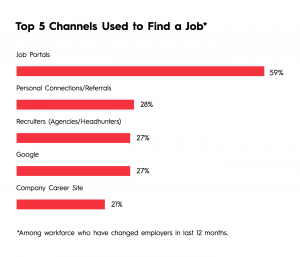
Business forecasting is more an art than a science, which doesn’t mean it doesn’t rely on specific and hard tools and methods. In this day and age, a company can’t ignore the process of forecasting, whether it tries to envision future sales growth, market demand or global economy shifts. Predicting the future has never been easy or 100% accurate. However, companies have plenty of methods of combining all sorts of data to at least obtain a possible image of what may come.
Today we will take a look at business forecasting principles and a few means to mix in financial and operational data to improve forecasting and bring a business’s predictions closer to the truth.
The Forecasting Process: Fundamentals
While business forecasting can seem subjected to pure randomness, it’s actually built on a set of fundamental key points that improve its accuracy.
- First and foremost, forecasting is based on past data that can be processed to predict future data. Data should be realistic. Just as a trader needs to know his average realistic monthly returns, so does a manager need to work with realistic data and avoid wishful thinking. This is where most forecasts fail, as forecasters tend to interpret past data emotionally instead of relying it.
- Another important aspect is its time range: a certain forecast will achieve higher levels of accuracy provided it comes together within a short temporal horizon. A forecast of sales for the next business week is going to be more accurate than one done for the next year.
- Aggregated forecasts are more reliable than individual forecasts. A company can better predict its total number of sold laptops than the total number of white laptops with distinct sets of specs.
- To better achieve a reliable forecast companies should work with ranges. While one cannot precisely predict sales of 10,000 units sold next month, they have better chances to make an accurate forecast if the numbers range in between 9,000 and 11,000 units sold.
Mixing Financial Data with Operational Data
A good forecast, according to specialists in the field, should follow a set of principles in order to achieve accuracy.
1. The Forecast as an Instrument of Change
Your forecast might be used to identify your business needs, anticipate trends, optimize certain business goals and outcomes, and improve overall productivity. In this day and age, entrepreneurs need to adapt before changes occur. In this process of becoming more flexible, forecasting can help you understand what you need to change in your business strategy.
This stage of forecasting allows you to combine financial data and operational data to make sure the forecast becomes an instrument of change for your business to grow.
While financial data gives you a clear picture of your past accomplishments and future ones (month-to-month growth rate in the previous year can predict revenue in the coming months, for instance), operational data helps you identify company flaws and give you the instruments to fix them:
- Is your supply chain system working efficiently?
- Are your transportation methods operating smoothly (and will they get better)?
- Do you have enough human resources to cover all company needs if demand increases as predicted?
- Does your company’s internal communication protocol help you work more efficiently or are you wasting time because of it?
- Is your employee turnover a problem that needs to be addressed both financially and operationally?
- Are your employees trained to engage in future projects or to face future challenges?
Answering all these question, not only helps you achieve a more accurate forecast, but it also offers you the tools to make changes for the future.
2. Shorter Time Horizons Can Include Both Financial and Operational Data
Setting a proper time horizon for your forecast helps you gain more accuracy. While you can use predictive analysis of your financial data to make more accurate predictions (the seasonal cycle of sale is likely to repeat in the next trimester as well), when it comes to operational data you need to include other variables that may help or prevent you from reaching your goals. That includes changes in the distribution/fuel costs, changes in taxation, covering of expenses related to equipment, IT, headquarters, employee turnover, shifts in market demand or sentiment, etc.
From a financial perspective, it is easier to predict that if you lower the price of a product, this will translate into changes in your ROI and profitability next month. From an operational perspective, it is harder to predict that if you change your supply system, this will positively impact your revenue or distribution efficiency in the next week. Setting up a time horizon to include both types of data gives managers a better view of future successes and challenges as well.
3. Predictive Analysis and Big Data Management
When it comes to mixing financial and operational data together, finance teams and experts involved in operations need an environment to allow them to work together in a fast, dynamic and collaborative way. Such a cooperative framework allows all experts involved to analyze scenarios and make re-forecasts in a rapid and efficient manner. For instance, by correctly forecasting sales for the next trimester, a company can change their shipping method, thus reducing costs or retain customers.
Financial and operational data cannot be treated separately. Fortunately, today there are plenty of cloud computing tools and big data analysis systems that allow financial and operational experts to collaborate strategically.
Usually, business forecasting takes a qualitative approach, bringing together experts and market research to make predictions. However, specialists in the field insist that if you only rely on polling or asking field experts for their opinion, you may fall behind competitors. That’s because using advanced predictive analysis and Big Data tools to make forecasts are more accurate, as they involve all experts in the company at all necessary levels.
Monitoring the Forecast: The Big Next Step for Success
While forecasting helps you plan production, adapt to the upcoming economic changes, make investments when needed, tweak prices or explore new revenue channels. A manager should always know that forecasting also comes with inherent problems as well. You have no guarantee that the past will definitely repeat in the future. It is almost impossible to factor in unpredictable events such as black swan phenomena or governmental laws being passed.
Moreover, relying solely on forecasts can place a manager in a dangerous spot where they trade creativity for an apparent predicted and almost determined future, thus decreasing a company’s level of versatility and adaptability. This is why monitoring the forecast every step of the way is crucial. By comparing it from a financial POV and an operational POV, it allows you to make changes every step of the way and take informed decisions to help your company grow.
Image source: 1
Business & Finance Articles on Business 2 Community(30)








